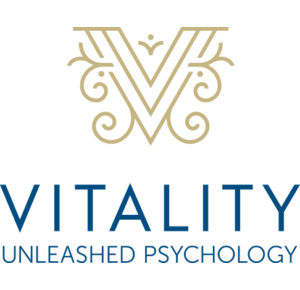EATING DISORDERS DIETITIAN
GOLD COAST
concerns about their relationship with food or their body, for all bodies
What Is Dietetics?
Even though it might sound like an infrequently used and unusual sounding word, ‘dietetics’ is the area of practice concerned with the diet and the way in which diet impacts our health. The field of dietetics has a particular focus on the practical application of underlying scientific concepts in relation to nutrition and health.
Eating Disorder Dietitian Services We Provide
Vitality Unleashed Psychology provides dietitian services by our Accredited Practicing Dietitian for people experiencing eating disorders:
- Bulimia Nervosa
- Anorexia Nervosa
- Binge Eating Disorder
- Orthorexia
- Muscle Dysmorphia
- Eating Disorders Not Otherwise Specified
We also provide services for those experiencing Feeding Disorders including:
- Pica
- Rumination Disorder
- Avoidant/Restrictive Food Intake Disorder
Our Eating Disorder Dietitian can also help people who do not necessarily experience the above diagnosed clinical eating disorders but have other related food/weight issues including:
- An unhealthy relationship with food and weight (e.g., food restriction or excessive exercise)
- Weight-related concerns
- Bariatric surgery support
- Chronic disease management
“Eating Disorders are serious mental health conditions where a person has an unhealthy relationship with food, eating, exercise, and their body image”
Eating Disorder Facts
Did you know that?
- Around 1 million Australians, or approximately 4% of the population are living with an eating disorder at any given time (Deloitte Access Economics, 2015).
- Eating disorders, when combined with disordered eating together, are estimated to affect 16.3% of the population in Australia (Hay, Girosi and Mond, 2015).
- Binge Eating Disorder and Other Specified Feeding and Eating Disorders are the most common eating disorders and affect approximately 6% and 5% of the total population respectively, while Anorexia Nervosa and Bulimia Nervosa each occur in < 1% of the general population (NEDC, 2017).
- The lifetime prevalence for having eating disorders is approximately 9% within the Australian population (NEDC, 2017).
- A recent review found that worldwide, lifetime prevalence of eating disorders was 8.4% (3.3-18.6%) for women and 2.2% (0.8-6.5%) for men. Furthermore, this research showed that the prevalence of eating disorders continues to increase over time (Galmiche et.al., 2019).
- Of people with eating disorders, 47% have Binge Eating Disorder, 12% have Bulimia Nervosa, 3% have Anorexia Nervosa and 38% have other eating disorders (Paxton et.al., 2012).
- With the assistance of knowledgeable and skilled health professionals, improved quality of life and full recovery is possible for many individuals living with an eating disorder (Butterfly Foundation, 2017).
What this shows is that, if you are thinking you may have some sort of disordered eating or eating disorder, you are certainly not alone as there are over one million Australians suffering with an eating disorder right now. Most importantly, with appropriate treatment and support, a full recovery is achievable.
Learn about some of the common eating disorders below:
ANOREXIA NERVOSA
Anorexia Nervosa is an excessive fear of gaining weight, with preoccupation with body image, obsessive focus on reducing food intake and losing weight, and often includes compensatory behaviours such as excessive exercise, purging or laxative use. A Dietitian can help the individual to restore weight and reverse some of the physical damage caused by the disorder.
BULIMIA NERVOSA
Bulimia Nervosa is the recurrent binge-eating episodes (the intake of abnormally large amounts of food in a short period of time), which is then immediately followed by self-induced vomiting, fasting, over-exercising and/or the misuse of laxatives, enemas or diuretics so to prevent that food intake converting to weight gain, and to clear oneself of the guilt from consuming the food.
ORTHOREXIA.
Orthorexia is an obsession with eating food that is ‘pure’; their focus is on the quality of the food consumed to an excessive degree, rather than the quantity, beyond that of ‘clean eating’.
MUSCLE DYSMORPHIA
Muscle Dysmorphia is a subtype of Body Dysmorphic Disorder, and is the person’s perception of themselves as being less muscular and smaller than what they actually are and causes significant distress.
Binge Eating Disorder.
Binge Eating Disorder is a condition where a person has regular episodes of consuming an excessive amount of food within a particular space of time (e.g., two-hour sitting) that would be more than what the average person would consume in that same period of time. It is typically accompanied by a feeling of a loss of control over the binging behaviour whereby the will struggle to stop the food consumption even if they wanted to, and associated distress. Furthermore, the person with this condition will not engage in compensatory behaviour such as self-induced vomiting or excessive exercise after binge eating to counteract the calories consumed.
